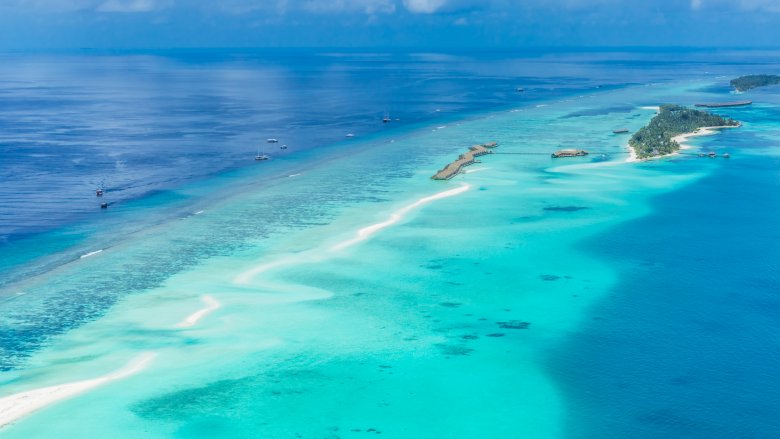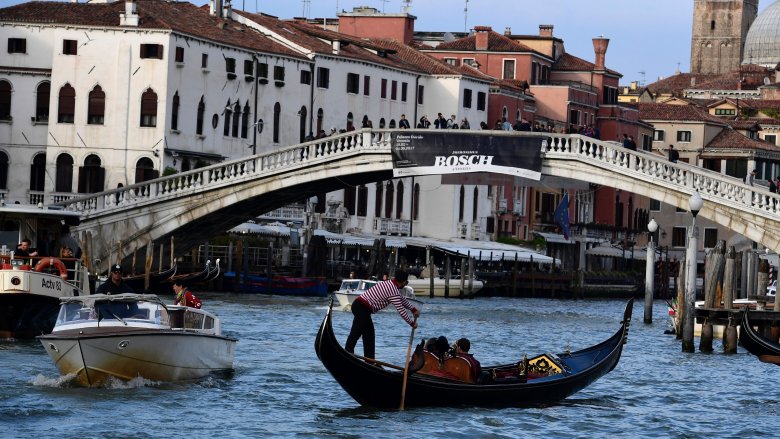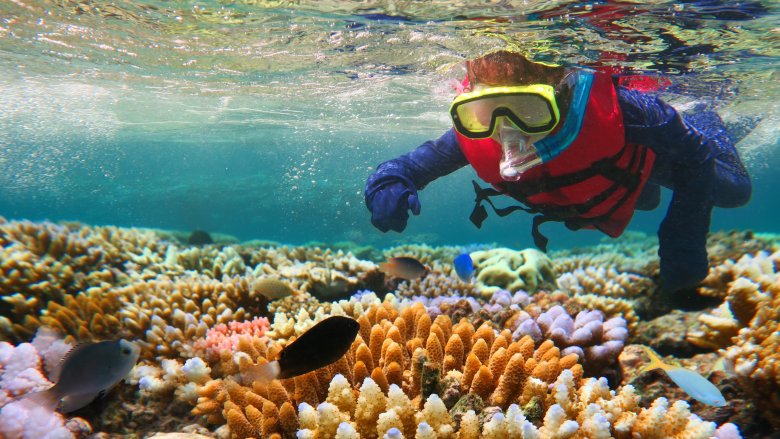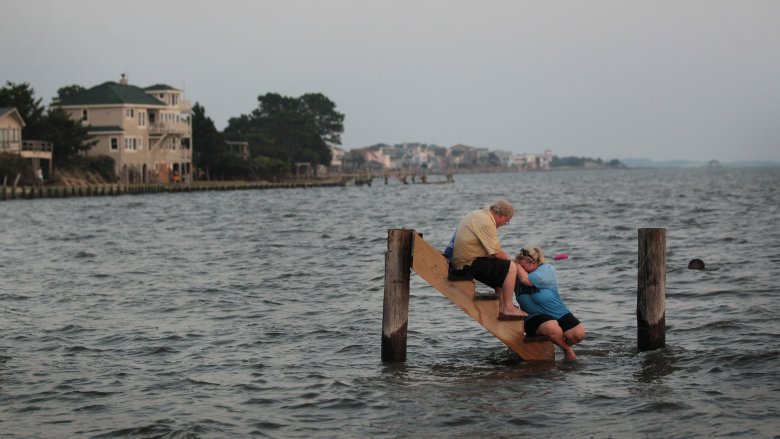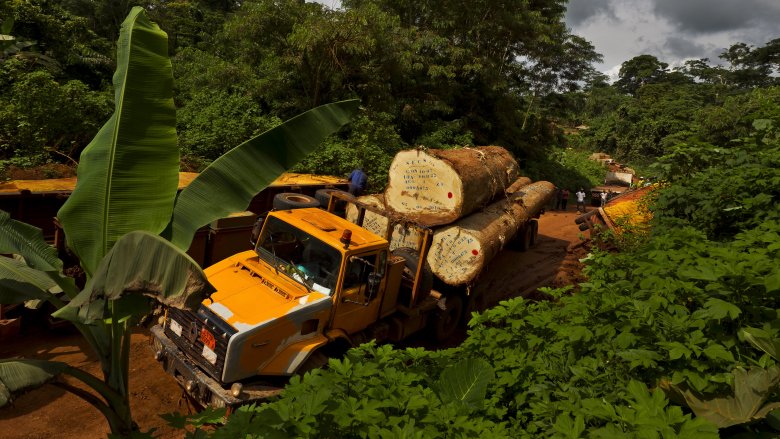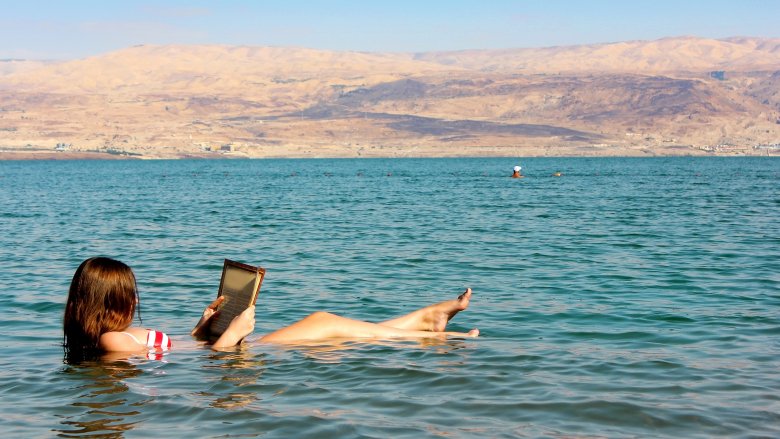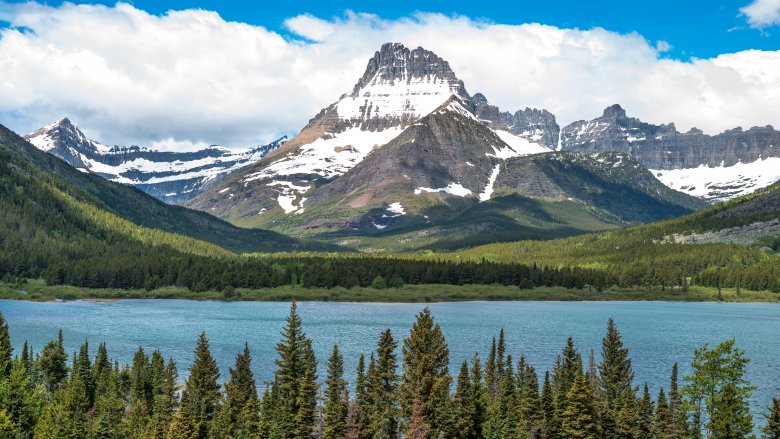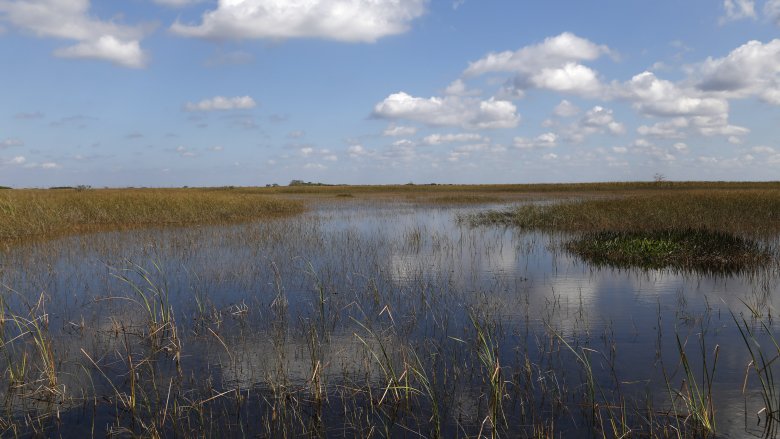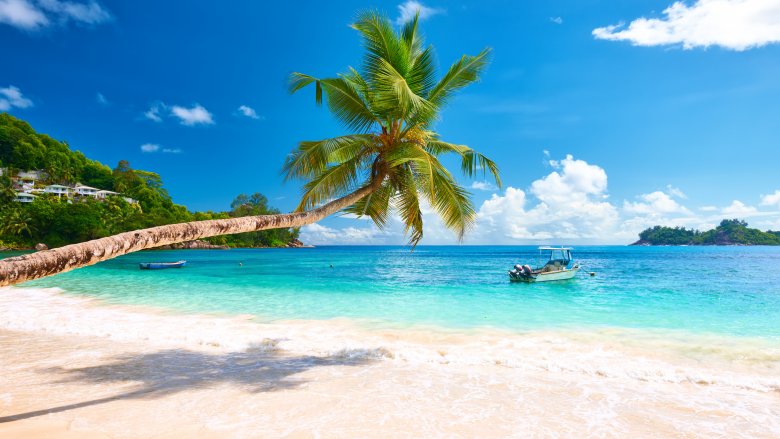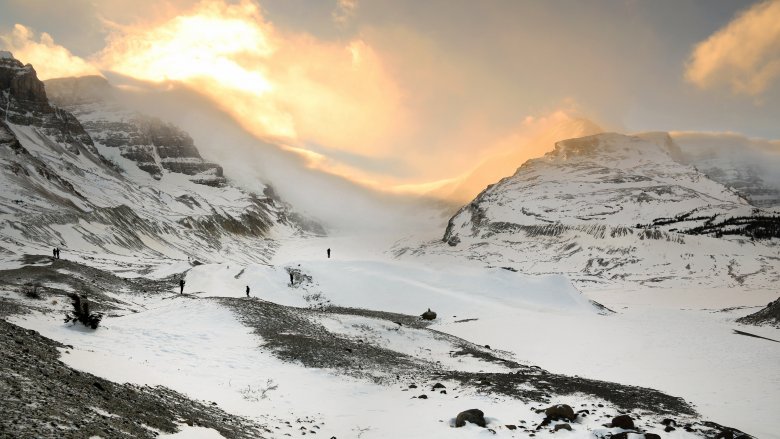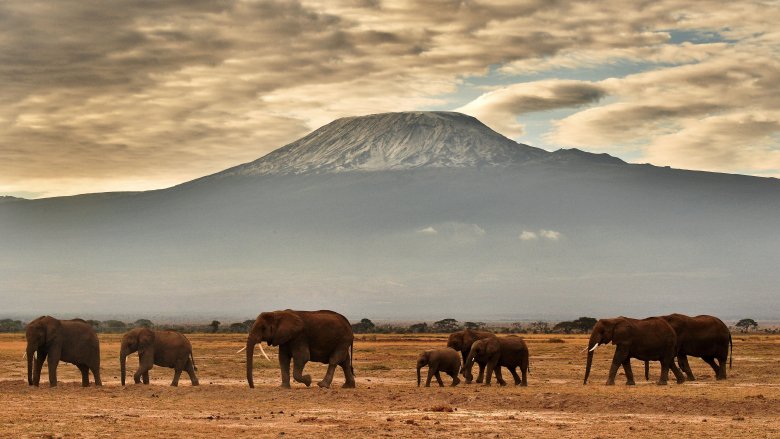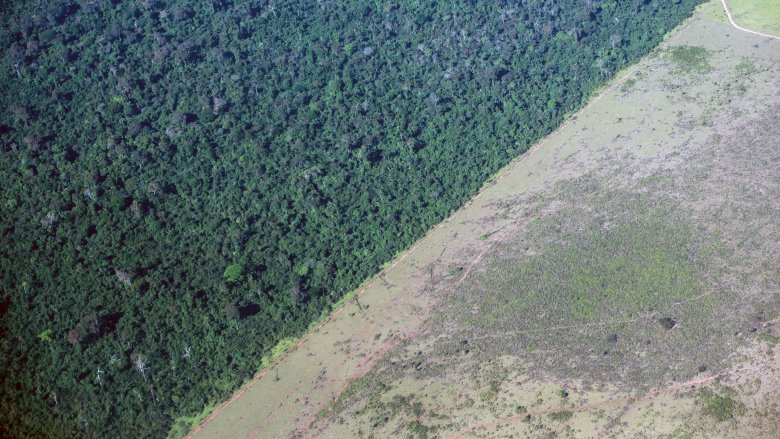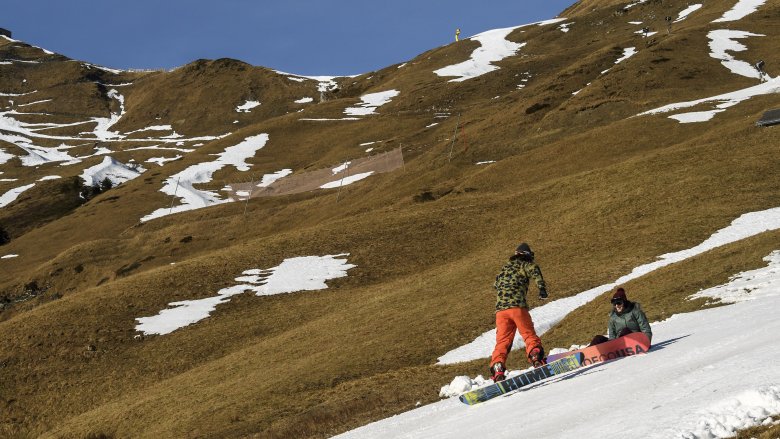Parts Of Our World That Will Be Gone In 100 Years
The world is a wonderful place, full of tropical island paradises, majestic glaciers, and lush rain forests. Sadly, most of those places won't be around forever. In fact, many of them will be gone way sooner than most people think. Luckily, no one reading this will be around in 100 years, so it won't be any skin off our backs, but there are definitely more than a handful of places in this world that won't be around in our grandkids' lifetime.
The Maldives
The Maldives may be a sun-soaked paradise and popular vacation destination for those looking to get their island on, but the South Asian tropical nation is already well on its way to disappearing forever.
With global sea levels rising at a steady rate, the Maldives is already looking toward a future in which the entire island nation is submerged, as roughly 80 percent of the 1,200 islands are 1 meter or less above sea level. Evacuation plans are already in place, with residents of Kandholhudhoo, a northern island, already making their way out. Global climate change is naturally to blame, but the Maldives aren't exactly doing themselves any favors. With 110 island resorts already existing in 2014, and more perpetually in development, the ever-delicate coral reefs probably won't survive for long. Fuel consumption and mountains of trash aren't stemming the tides of climate change, either. All things considered, a place with the average ground level only 1.5 meters above the sea just simply isn't going to exist in 100 years.
If you want to experience the lovely beaches of this island paradise, you'd best book a flight and get to it, as the Maldives is going to be one of the first places on this earth to say bye-bye.
Venice, Italy
Venice's problem is simple. The land is sinking, while the sea is rising—not a good combination for the historic canal city.
Venice may well become uninhabitable by the end of the century, as the sea-level situation isn't going to get any better. 100 years ago, the area around St. Mark's square flooded roughly 10 times per year. Now, it floods upward of 100 times per year. By 2100, the Mediterranean Sea is expected to be a solid 140 centimeters higher than it's now, slowly engulfing Italy's western coast and flooding upward of 5,500 square kilometers of coastal plain. And, honestly, those estimates might even be a bit conservative.
The good news is, you've still time to take a gondola ride down a Venetian canal. Just not too much time.
Great Barrier Reef, Australia
Australia's Great Barrier Reef has reached its tipping point, and time is definitely not on its side.
The world heritage site is truly on the verge of destruction, with scientists predicting the Great Barrier Reef to be irreversibly damaged by as early as 2030. The cause? Carbon dioxide, and of course global climate change. Coral simply doesn't take kindly to carbon dioxide, and the ocean is doing a mighty fine job of sucking in the pollutant every day. And this ain't no tree-hugging conspiracy theory, either: the death of the Great Barrier Reef is already underway, and the world's leading coral reef experts all agree its destruction is imminent. Australia's reef is bleaching at an alarming rate, prompting the Australian government to take action and monitor the reef—a massive tourist attraction and economic goldmine—much more closely than ever before.
Australia's Great Barrier Reef is by no means the only reef turning deathly white. 2015 saw 12 percent of the world's reefs become bleached, a sad and chilling reminder that our world will never be the same as it once was.
Outer Banks, North Carolina
The imminent disappearance of some places on this planet may not come as too big of a surprise. Not too many people, however, are aware that North Carolina's Outer Banks will someday be wiped off the map.
Lots of things are hammering away at North Carolina's popular vacation destination. Storms and hurricanes, like 2011's Hurricane Irene, give the island getaway a regular bashing, while development certainly doesn't do much to preserve the natural environment. Furthermore, as is well documented, the sea level is rising. The Hatteras Island between Avon and Buxton is now only 25 percent or less of its original width, with houses all over the island now standing on makeshift stilts. As sad as it's to predict, both life-long residents and seasonal tourists have to accept the reality of the situation: the Outer Banks will be gone before we know it.
Wild horses might not be able to drag us away from the OBX, but the rising sea level certainly will.
Africa's Congo Basin
Islands and coastal locations aren't the only parts of our world that will disappear in 100 years. Africa's Congo Basin, home to the world's second-largest rain forest, isn't poised to survive into the 22nd century.
All the common deforestation factors are at play in the Congo Basin's destruction, which loses an estimated 3.7 million acres per year. The World Wildlife Fund's Central African Regional Office blames agricultural practices, road development, rampant exploitation of oil and mining, and, of course, logging. The destruction of the Congo Basin rain forest is said to release an estimated 3 billion tons of carbon dioxide annually, which only serves to accelerate, as much as deniers might try to argue against it, global climate change. Perhaps worse yet is the potential loss of animal species, with the rain forest being home to roughly 400 mammal species, 655 bird species, and over 10,000 plant species, making it one of the most naturally rich places on Earth.
Considering we dig animals of all kinds, the destruction of the Congo Basin rain forest is more than just sad, it's ultra sad, which is why Britain and Norway put together a £108 million fund in 2008 to help keep the forest around a little longer. Considering the way the world's going these days, however, we won't hold our breath.
The Dead Sea
Just because it's already called the Dead Sea doesn't mean it isn't dying.
The super salty lake between Israel, the West Bank, and Jordan is disappearing off the face of the Earth, and it seems as if there's nothing we can do to stop it. In 2012 alone, the Dead Sea's water level shrank by an astounding 4.9 feet. Numbers like that are truly astonishing, especially when compared to measurements of, say, the rising sea level or coastal erosion, and there's a pretty straightforward reason the Dead Sea is dying a fairly rapid death: people gotta have that salt! And by "people," we mean Israel Chemicals Ltd and Jordan's Arab Potash Company, which suck up the sea's salty goodness like it's nobody's business (except theirs). With one-third of the surface area already gone, sinkholes are popping up more frequently than in a poorly planned Florida retirement community, and the ecosystem is sustaining damage in line with what one would expect when virtually the entire thing is disappearing.
Better check your passports and book a flight as soon as possible, because the Dead Sea already has one foot in the grave.
Glacier National Park's glaciers, Montana
It's common knowledge to Montana residents that the glaciers in the state's Glacier National Park will all but disappear by 2030, which doesn't leave us much time to marvel at what still remains.
The once massive and majestic glaciers inside Glacier National Park are rapidly turning into what ecologist Daniel Fagre calls "small insignificant lumps of ice on the landscape," though we're certainly not in favor of the park changing its name to reflect that. Many glaciers in the park have already disappeared completely. In 1910, most of the original 150 glaciers from 1850 still remained. By 2010, only 25 glaciers spanned 25 acres or more. The simple fact is that the giant hunks of ice are melting, and there's not a damn thing we can do to stop it.
Pending another Little Ice Age unexpectedly brought on by global climate change, which is unlikely to happen, Glacier National Park soon won't be able to live up to its name.
The Florida Everglades
The Florida Everglades is a remnant of a prehistoric paradise, rich with crocodiles, maybe dinosaurs, and other ridiculous creatures you probably never knew existed. You also may not know that the region is on UNESCO's List of World Heritage in Danger.
Humans are to blame. One hundred years ago, the Everglades were twice the size of what they are now. Today, only a miniscule one-fifth of the place is even protected as a national park, and human-caused drainage, development, and the introduction of non-native species have wreaked havoc on the primordial swamplands, putting endangered species such as the manatee and panther in even greater danger. With the population of south Florida exploding in recent decades, nutrient pollution has become a substantial problem, drastically changing the naturally nutrient-deficient ecosystem. People also, for one reason or another, have a propensity for releasing pythons into the ecosystem, which cause all sorts of imbalances in the natural pecking order.
In short, people weren't really made to live in the Everglades. It's a pretty wild and accommodating place for a human being. However, being the dominators of nature that we pretend to be, we've conquered the Florida Everglades, virtually ensuring that they won't be around for another 100 years.
The Seychelles
The Seychelles is 115 picturesque islands located in the Indian Ocean, to the East of Africa. The country is famous for its stunning beaches, mountain rain forests, and rare Aldabra tortoises, and also sports one of the coolest flags you'll ever see. Sadly, the country is also sinking.
It's already experienced one of the worst coral die-offs in the entire world, thanks to climate change and the Indian Ocean's tendency to warm up faster than the Atlantic or Pacific, but that might be the least of the country's worries, at this point. The Seychelles is looking toward the near future, as the next 50 to 100 years could see the island nation submerged. Seychelles ambassador Ronald Jumeau blames both the rising sea level and the death of the coral reefs, though he puts more focus on the latter. As the white, sandy beaches' first line of defense against the angry sea, dead coral means no protection against erosion. As a result, the Seychelles has been forced to litter some of their beaches with granite boulders, which, Jumeau told NPR, isn't "exactly the reason tourists come to Seychelles." Nonetheless, it seems to many that the complete erosion of Seychelles is inevitable.
Soon, natives will have to find a new home, and tourists will have to book tickets to other picturesque beaches for vacation, assuming those aren't also underwater in the next century.
Athabasca Glacier, Alberta, Canada
The melting of glacial ice isn't a particularly new phenomenon, though climate change deniers love to look the other way. Nevertheless, the glaciers are receding all over the frozen parts of our planet, with Canada's Athabasca Glacier looking like one of the first to disappear completely.
The Athabasca Glacier is one of the most visited, if not the most visited, glacier in North America. Sadly, no one will be visiting it in 100 years, if current predictions prove themselves to be true. The Athabasca Glacier is losing five meters of ice every year, with 70 percent, or even 90 percent, of its total ice expected to be gone completely by 2100. The glacier is not only a hotspot for tourists, who can take a bus tour and walk along the frozen ice field in Alberta's Rockies, but also vital to the region's ecosystem, which is heavily influenced by a seasonal boost of water flow from the giant mass of ice. Without it, the ecosystem will be drastically different, and once the Athabasca Glacier is gone ... it's gone for good.
Mount Kilimanjaro's ice, Tanzania
Mount Kilimanjaro is one of the most iconic and beautiful landscapes in the entire world. Or, at least it was ...
When explorer and former National Geographic Adventurer of the Year Will Gadd reached the summit of Kilimanjaro in October 2014, he was struck by what he saw, or, rather, what he didn't see. What was once covered in ice is now a somewhat barren landscape, devoid of the majestic ice sculptures that once covered the mountain's peak. The melting of Kilimanjaro's ice isn't exactly new, however, as the period between 1912 and 2011 saw 85 percent of the mountain's ice disappear, with the rest slated to be gone completely by 2020. Indeed, the ice is melting, and it's melting fast! Gadd told The Guardian, "We were climbing ice that's easily 10,000 years old and isn't going to be there next week. We camped up on top of Kilimanjaro for about five days, and some of the things we climbed on, we came back and they had fallen over."
Forget parts of our world that will be gone in 100 years! The snows that covered Kilimanjaro in Hemingway's famous short story are all but already gone.
The Amazon Rain Forest
There's a good chance that when you were growing up, depending on your age of course, you heard all about how we need to "save the rain forest." Heck, it was everywhere, from Saturday morning cartoons to headline news. Lately, nobody seems to talk much about the rain forest, which makes us wonder whether we saved it, even though we don't really need to be told the answer.
Turns out, we didn't save the rain forest. In fact, it's just as bad, if not worse, than it's ever been. In 2014, data showed a 190 percent rise in Amazon land clearance from 2013, with September alone seeing a space six times larger than Manhattan deforested. Over the past couple decades, two Germanys worth of land was cleared from the world's most lush and diverse source of life, causing droughts in São Paulo and eradicating innumerable species' natural habitat, as well as the species themselves.
So what's to blame? This time, it's not climate change. It's simply human beings cutting down all the trees (which, in turn, accelerates global climate change). Land is clear-cut primarily for cattle ranching, as the demand for beef only grows with the world population. Logging is also an obvious factor, with selective logging also playing a part, seeing valuable trees, like mahogany, cut and smuggled out of the forest.
Someday, the Amazon rain forest will be gone, unless action is taken to stop its destruction. Judging by the past handful of decades, including those of the 21st century, we shouldn't get our hopes up.
The Alps' glaciers
Oh, the beautiful, majestic Alps! They're a favorite European vacation destination for world travelers looking to hit the slopes and carve some fresh trails into the crisp, clean show. Lucky for us, there is, generally speaking, plenty of snow to go around. Major bummer for future generations, though: the Alps' ski slopes are on thin ice.
As is the case with other icy places on our once-beautiful planet, the Alps' ice is steadily melting away. According to the Institute for Snow and Avalanche Research in Switzerland, the end of the 21st century could see a 70 percent reduction in snow and ice on the famous mountain range. The vast majority of monitored glaciers in the Swiss alps are receding, though it's not really news. The Alps' major glaciers lost half their mass between 1850 and 1975, and there's nothing we can do to halt the recession aside from cut down on carbon dioxide emissions, which is every big business's plan, we're sure. The North Atlantic Oscillation, which also has been playing a role in the Alps' warming, is probably out of our hands, though.
Unsurprisingly, the ice and snow of the Alps plays an important role in both environmental and economic systems, and both will be affected quite drastically in the next 100 years. But hey, at least we all can still carve up some fresh pow-pow and get our inner ski snob on! Our great-grandkids, though? Sucks to be them.

